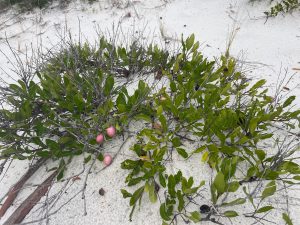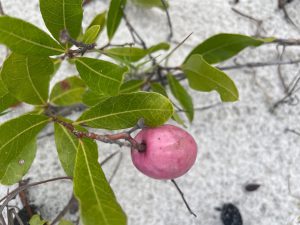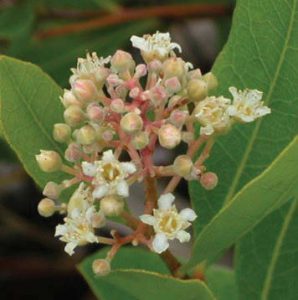
On first glance at a gopher apple, one might think there were live oak leaves dispersed across the dunes. On closer inspection, though, you’d find individual leaf clusters sprouting right out of the sand. For the majority of the year, this nondescript woody foliage grows in sandy coastal ecosystems and pine flatwoods, and is relatively inconspicuous in a landscape.

That is, until the fruit shows up, and you cannot miss the bright pink fruit hanging off the plant. The fruit is what gives this plant half its name—gopher apple (Licania michauxii or Geobalanus oblongifolius)—while the first half comes from the animal most closely associated with it—the gopher tortoise. Gopher tortoises are endangered species native to sandy ecosystems where they can easily dig their extensive burrows.

Gopher apple plants grow via underground runners, and produce small white flowers in the spring and summer. The flowers provide pollen to bees, wasps, and flies. The leaves are stiff and waxy, helping prevent water loss and maintain drought tolerance in very dry habitats. This stiff exterior also helps with its significant salt tolerance, making it a great choice for coastal landscapes. The fruit is edible (but not particularly tasty) to humans, and highly sought after by many animals besides the gopher tortoise, including foxes, raccoons, and deer.
Gopher apple can be found throughout Florida, north to South Carolina, and west to Louisiana, and is a crucial component of a healthy coastal dune system. An extract from the plant is also being researched for cancer-fighting potential.
 2
2
